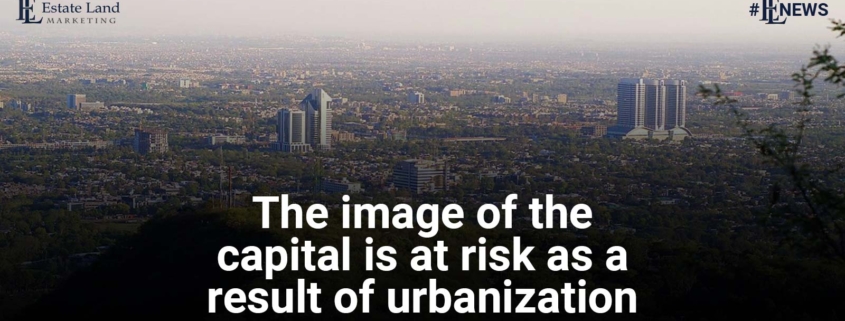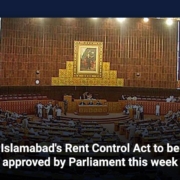The image of the capital is at risk as a result of urbanization
Islamabad, the poster of a country child for being clean and green, is swiftly reaching a paradox due to its seemingly endless expansion, the unending influx of refugees, population growth, and rise in concrete structures.
Experts anticipate that by 2030, the capital would be renowned as a concrete city rather than a green one. But, of course, there is nothing invalid with being known as a substantial city, as many other international capitals are; Islamabad is already feeling the effects of population increase in water shortages, security concerns, rising unemployment, and inflated housing costs.
Instead of enlarging the boundaries of Islamabad to accommodate housing societies, urban planner Naveed Iftikhar believes that it should house the burgeoning population in high-rise buildings. Providing electricity, water, gas, and roads to new sectors near Wah Cantt, Taxila, Bara Kahu, Rawat, and Peshawar Road will cost billions of rupees. In contrast, multi-story buildings in developed sectors will reduce costs and provide housing and other amenities to citizens in one place; Iftikhar told this.
While apartment living is widespread in the federal capital, there has been evidence of a preference for living in houses. As a result of this inclination for higher property rates, demand for relocating to housing societies outside of the city center is an all-time high.
You might be interested in The P&D Board is opposing PC-I of the Ring Road project
With this demand in mind, officials from the Capital Development Authority (CDA) said that every modern country and city faces these problems. Still, that work is in full swing on new sectors by expanding the town and developing existing ones to provide new public parks, schools, colleges, and medical facilities to the growing population.
Demand and supply development is unavoidable due to fundamental economics. But, according to Waleed Ismail, an urban designer based in Islamabad, this move has massive ramifications. First, there is a climatic influence since the average temperature of the city has increased due to the more significant usage of hard pavement (asphalt) surfaces, he explained.
Ismail, echoing Iftikhar, stated that we must stop the development of Islamabad or sprawl since we are losing cultivable land to build housing societies. Moreover, Islamabad is a landlocked place with few water sources and depleting groundwater. If we keep extending the border and creating housing societies, water shortage is inevitable, Ismail added, referring to the rise of water tankers in the new sectors of Islamabad.
Public transportation is required
Both Iftikhar and Ismail agree that the proposal of CDA for new roadways prioritizes private-car owners above the general public, effectively making Islamabad a private-car-only city.
Ismail told the EL news to spend too much money on highways to connect private car users to metropolitan centers as a country. Even while no one is to blame for the development pattern of Islamabad, the urban planner says it would be preferable to look at what has worked in other developing countries like Mexico, India, and Bangladesh. Transit-oriented development is what these countries are relying on for their survival.
The transit-oriented development plan focuses on constructing housing and commercial alternatives near public mass-transit networks and initiating transit nodes from densely populated regions to connect people to service areas, markets, hospitals, and parks. Ismail believes that by doing so, he will be able to combat the growing asphalt surfaces of the city while still preserving Islamabad’s green places.
Ismail believes that the city’s management lacks skilled professionals who specialize in recognizing difficulties before they occur and offering long-term solutions to Islamabad’s growing population problem.
If you want to be aware of latest happenings visit the Estate Land & Marketing news blog.








Leave a Reply
Want to join the discussion?Feel free to contribute!